The modern steel industry, like any other under a capitalist production regime, needless to say, is heavily dependent on technology and innovation as a major driver, especially at this day and age when the turnaround time is faster than ever before.

As per the foundational thesis of Joseph Alois Schumpeter, an Austrian-born American economist and political scientist (1183-1950), whenever there is a rise in the technological innovation graph, then industry flourishes, with increasing returns to scale. Thereafter, comes an inevitable period of technological stagnation, a timeband in which industry keeps on producing the same products which end-users consume at a certain level of income. Concomitantly, there is no remarkable spurt in demand, unless that income rises very fast. This leads to a satiation in terms of consumption of the same old product.
Ironically, once the steel manufacturers inevitably start accessing and implementing that high level of technology, in a vicious cycle, the knowledge barrier automatically gets broken, allowing the entry of many players into the field, resulting in production glut. Then there is again a need to raise the bar. Unless and until there is a sudden boost in technology, the industry index will not jump up again in a cyclical reflex.
Dr Susmita Dasgupta, Joint Chief Economist, Economic Research Unit, Joint Plant Committee, tells Steel Insights: “The problem with the technology of steel making is the fact that the growth in its progress has plateaued out and we encounter a fair amount of standardisation in the steel making knowhow across the world. Clearly then, the incremental returns to scale have plateaued out as well and industries like film-making, television and ethical hacking seem to be earning better margins for the same level of investments!”
هذه القصة مأخوذة من طبعة September 2018 من Steel Insights.
ابدأ النسخة التجريبية المجانية من Magzter GOLD لمدة 7 أيام للوصول إلى آلاف القصص المتميزة المنسقة وأكثر من 9,000 مجلة وصحيفة.
بالفعل مشترك ? تسجيل الدخول
هذه القصة مأخوذة من طبعة September 2018 من Steel Insights.
ابدأ النسخة التجريبية المجانية من Magzter GOLD لمدة 7 أيام للوصول إلى آلاف القصص المتميزة المنسقة وأكثر من 9,000 مجلة وصحيفة.
بالفعل مشترك? تسجيل الدخول

Steel's Net Zero mission
The country’s commitment to achieving Net Zero within a targeted timeframe will now propel its steel sector towards a sustainable future in line with global trends.
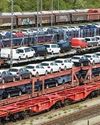
Fuel Price Hike, Supply Chain Disruption Hurt Festive Sales
Supply chain disruptions and fuel price hikes have hurt festive sales in a big way as most auto majors posted decline in sales in October.

Seaborne coking coal offers remain range-bound
Seaborne coking coal offers moved in a narrow range in October amid global supply tightness and healthy spot demand.
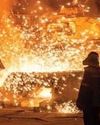
Global crude steel output down 8% in September
China manufactured 74 mt in September, fall of 21% y-o-y while India’s production went up by 7% to 10 mt.
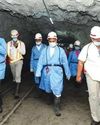
MOIL embarks on expansion projects
“Even though our country is blessed with manganese ore reserves, we import 50% of the domestic requirement. We have to lower our import dependence and save precious foreign exchange.” Ram Chandra Prasad Singh, Steel Minister

Iron ore handled by major ports down 17% in H1
The 12 major Indian ports handled 27 mt of iron-ore during H1 of 2021, down by 17% from 33 mt recorded for the corresponding period of previous year.
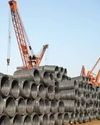
Shrinking China output to boost India exports
“In the third quarter of 2021, the company actively responded to the pressure from external policies, such as production curtailment and dual control system on energy consumption and intensity, as well as coal resource shortage and surging prices.” Baoshan Iron and Steel Co Ltd

Indian Railways' iron-ore handling up 25% in H1
Indian Railways in April-September of 2021 (H1) transported 84 mt of iron ore, up by 25% over 67 mt during April-September 2020.
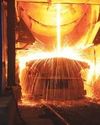
September crude steel production up 7.2% y-o-y
India’s crude steel production in September 2021 grew 7.2 percent to 9.547 million tons (mt) over September 2020 but was down by 3.2 percent from August 2021 output, provisional steel ministry data showed.

“Five enablers: way forward to sustainable cleaner steel”
Right and scalable technology, appropriate policy guidance by government, access to finance to fund transition, willingness of customers to pay for cleaner products and infrastructure for use of new technologies are the need of the hour for the sustainable and cleaner steel industry, according to Madhulika Sharma, Chief Corporate Sustainability, Tata Steel.